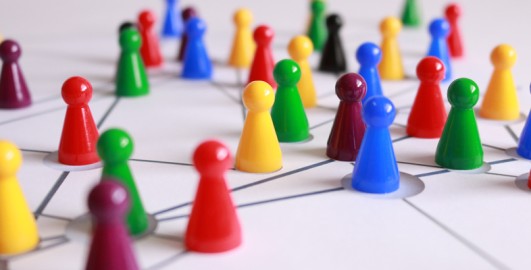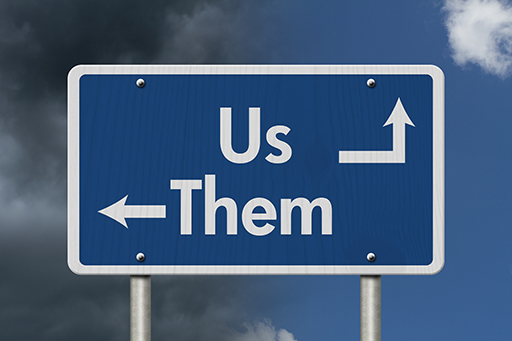1.1 Tajfel and Turner’s social identity theory
Social identity is a person’s sense of who they are based on the group memberships they choose, and Tajfel and Turner’s theory (1979) proposes that people derive a proportion of their self-concept from the social groups they are members of (McLeod, 2023). This can include feelings of belonging and connection, a sense of purpose from shared goals, and a boost to self-esteem.
Tajfel and Turner’s social identity theory of intergroup behaviour (1986) describes the phenomenon of ‘in-group’ and ‘out-group’. An ‘in-group’ is the preferred group, which is seen as better to belong to. By contrast, membership of the ‘out-group’ is seen as undesirable and those who belong to it are viewed with some kind of prejudice or discrimination.
For Tajfel and Turner, putting people into categories or groups was simply part of the normal cognitive process, as we all have a tendency to group people and things together in order to better understand them. However, when this happens there is a tendency to exaggerate two things:
- the differences between you and other groups
- the similarities among members of the group you are in.
Their work recognised three cognitive processes that are part of this:
- Social categorisation – the process of deciding which group you belong to, often based on attributes such as race, gender, nationality or religion. This in itself is not a problem and not involved in the possible later prejudice or discrimination against other groups.
- Social identification – when you are part of a group you tend to identify with them. You take on the attitudes and ways of working of other members of the group and see their views as compatible with your own and therefore worth emulating.
- Social comparison – the very act of belonging to a group increases your concept of self. Other groups are seen as being different and you start to identify them as ‘them’ and your own group as ‘us’. It is this final stage in the cognitive process where social comparison is made with other groups that in itself creates the distinctiveness of the in-group.
In the first activity this week, you’ll explore examples of well known in- and out-groups.
Activity 1 Famous in-groups and out-groups
Take a moment now to think of some famous examples of in-groups and out-groups. You may want to explore the context of sport, countries, religion or politics to help you come up with some ideas. Jot down your answers in the box below. Two examples have been given – see if you can add five more!
- Religion – Catholics and Protestants in Northern Ireland
- Age – teenagers and older adults
Of course, a person’s personal perspective will determine for them which group is ‘in’ and which is ‘out’.
Comment
There are lots of examples of in-groups and out-groups and some are more controversial or upsetting to think about than others.
- Age – teenagers and older adults
- Literature – the Montagues and the Capulets in Romeo and Juliet
- Ethnicity – Bosnians and Serbs in the former Yugoslavia
- Politics – Labour and Conservatives
- Sport – Manchester United and Liverpool football teams
- Social class – middle class and working class
- Professional – doctors and hospital administrators
- Music – classical music and heavy metal fans
There might even be an in-group and an out-group within your current work team. Perhaps the team leader seems to play favourites or maybe there’s a sub-group within the team that seem to make all the decisions. Becoming more aware of the potential for these groupings might give you a better understanding of conflicts within the team and help you to participate more effectively in putting them right.
The key to breaking down in- and out-groups within a work team is making all team members feel that they belong. The role of the team leader is to create an environment where everyone feels heard and has the confidence to raise when they feel excluded. This is particularly important if the team is to make the most of the diversity and creativity of each individual member.
Next you will look at the distinction between stereotypes, prejudice and discrimination and complete an activity to see if you hold any stereotypical or prejudiced thinking that you are not consciously aware of.

